4 SOP's you Can Implement Today in your Programming
In the popular book, Extreme Ownership, co-authors Jocko Willink and Leif Babin discuss standard operating procedures (SOP's) extensively. They describe SOPs as a means of creating a clear process to make commonly performed tasks as efficient as possible.
Based on my expertise, I strongly believe that implementing SOP's is absolutely crucial for the seamless operation of a successful and scalable programming system within your organization. The key lies in standardizing the elements that you and your team deem essential, as even the smallest details can have a profound impact on efficiency and productivity.
By establishing these standardizations, you will greatly enhance clarity in communication, both between coaches and athletes, and among coaches themselves. Moreover, they will pave the way for a well-defined course of action, ensuring that everyone is on the same page.
In order to effectively harness the power of a digital programming platform like BridgeAthletic, it is imperative to implement these vital SOP's. Here are our top four SOP's at Results Fitness...
#1. Include the full name of the athlete/client in the title of the program

Why is this important?
This allows for easy program searchability and the ability to use previously designed programs and phases as templates whenever necessary. Additionally, including the program's theme or goal in the title enhances intuitive searching for previous programs that can be modified and repurposed for future use.
#2. Use consistency and a set structure when naming exercises in your library
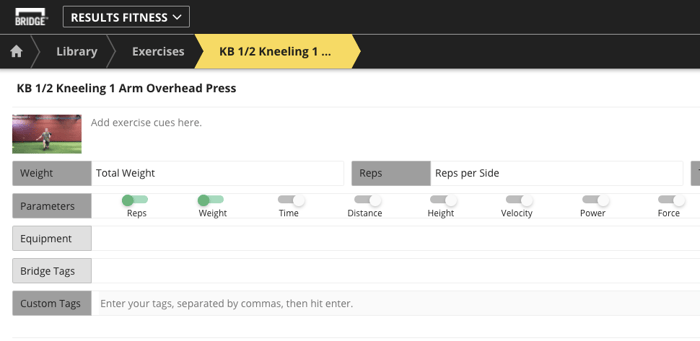
For example, our SOP of naming exercises uses the 'implement-position-exercise' method:
Implement: Kettlebell (KB)
Position: Half Kneeling (1/2 Kneeling)
Exercise: One Arm Overhead Press (1 Arm Overhead Press)
Why is this important?
Effective communication is key to success, and one way to achieve this is by speaking the same language and using consistent terminology. In the realm of strength and conditioning/fitness, it's common for exercises to have multiple names, causing confusion among staff and athletes/clients. While this industry-wide issue may never be fully resolved, we can take control within our own organization.
By giving each exercise one name only, we minimize confusion and promote clearer communication. Fortunately, in the digital age, we have the advantage of attaching visual aids like images and videos to exercise names, making it easier than ever to overcome this challenge. Gone are the days when we relied solely on words on paper.
#3. Keep exercise videos short at 10-30 seconds in duration
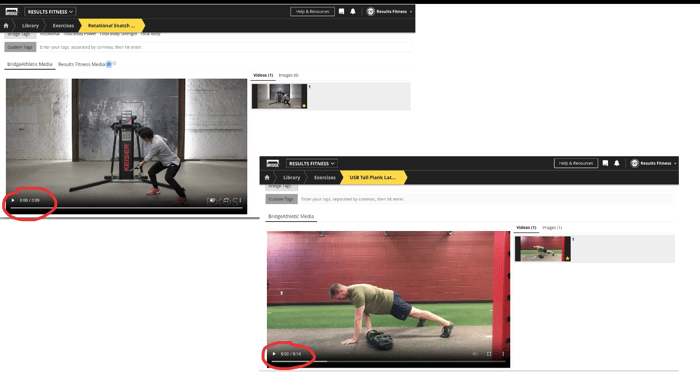
Why is this important?
As we integrated our own exercise library videos into BridgeAthletic, we took inspiration from the existing EXOS library videos to determine their length. We immediately noticed that the EXOS videos were relatively short, serving as quick references for executing and setting up exercises rather than detailed tutorials. Our main concern was to avoid burdening our in-person clients with lengthy videos that would eat into their valuable training time. Additionally, we wanted to prevent our coaches from becoming overly reliant on videos as a default. After careful consideration, we found that keeping these videos to 3-5 reps or 10-30 seconds struck the perfect balance, providing our athletes with visual references that are concise and effective.
4. Utilize template sets to stay consistent with specialized set/rep protocols and progression plans
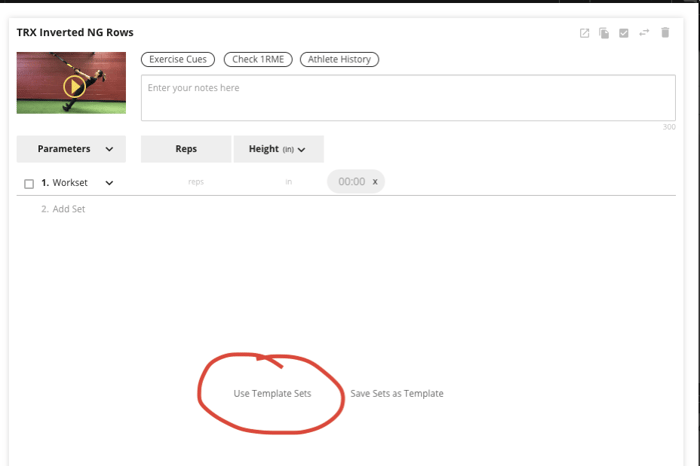
Why is this important?
Back in the pre-digital programming era (of about 3 years ago 😆) I kept a spreadsheet to keep track of the way that I wrote any kind of special set/rep protocols such as ladders, rest pause sets, drop sets, cluster sets, etc. The reason that I did this was so that I could be consistent in the way I wrote them and not forget any important details that I needed to communicate when using them.
The great thing about using template sets in BridgeAthletic is that this stuff can literally be right at your fingertips for future usage by all the coaches in your organization. It is truly an underutilized feature that can be a massive time saver. It can also be used to communicate progression plans so that directions are clear for athletes and coaches alike so that less assumptions are made about how to progress.
Here is an example of what a rest pause protocol would look like on my old excel spreadsheet and what it looks like saved as “template set” today on BridgeAthletic. I can easily replicate it the same way every time with far less hassle and far more clarity than when using Excel.

If I want to communicate to an athlete to utilize a double progression approach in a pulldown for example, I can use template sets and with one click it drops in something like this (observe that the “notes” are saved):
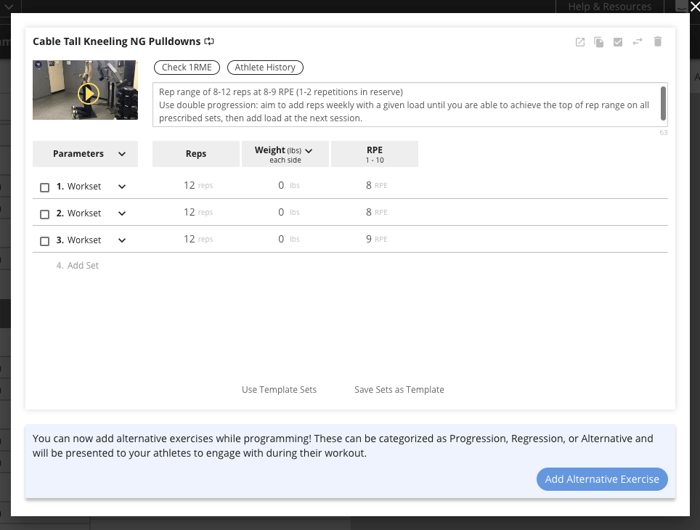
Start implementing and utilizing these SOP's in your organization today and watch efficiency improve immediately!
About the Author

Craig Rasmussen is the Director of Programming and Coaching Education for Results Fitness University. Craig has over 20 years of experience in the fitness industry working with all levels of athletes. He has been featured numerous times in magazines including Muscle and Fitness, Men's Fitness, Men's Health, and T-Nation. He is also the co-author of the book Secrets of Successful Program Design. Instagram: @craigrasm Facebook: Craig Rasmussen
Related Posts

Six Benefits of Exercise on Mental...
Exercise is not only vital for physical health but also plays a transformative role in mental...
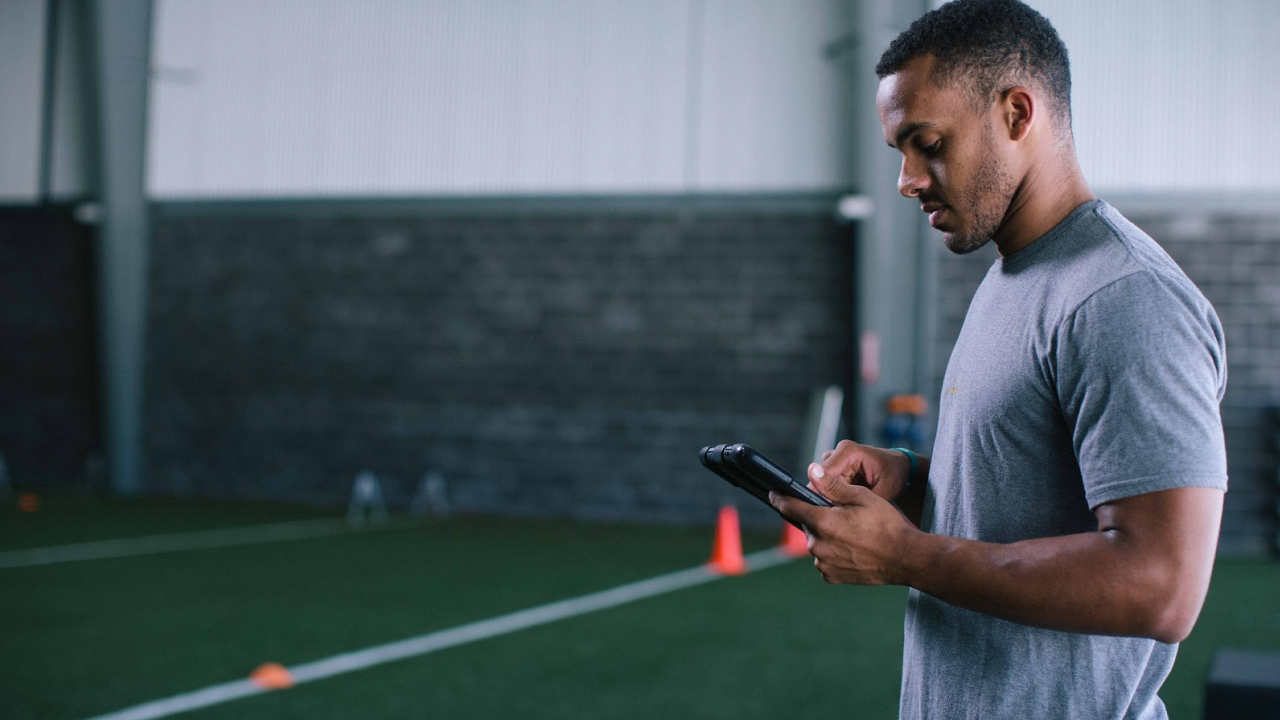
4 Easy Steps to Launch and Sell a...
The holiday season offers a unique opportunity for personal trainers to reach more clients and...

4 Proven Offers to Attract Clients and...
Standing out in the competitive world of personal training and fitness coaching requires more than...


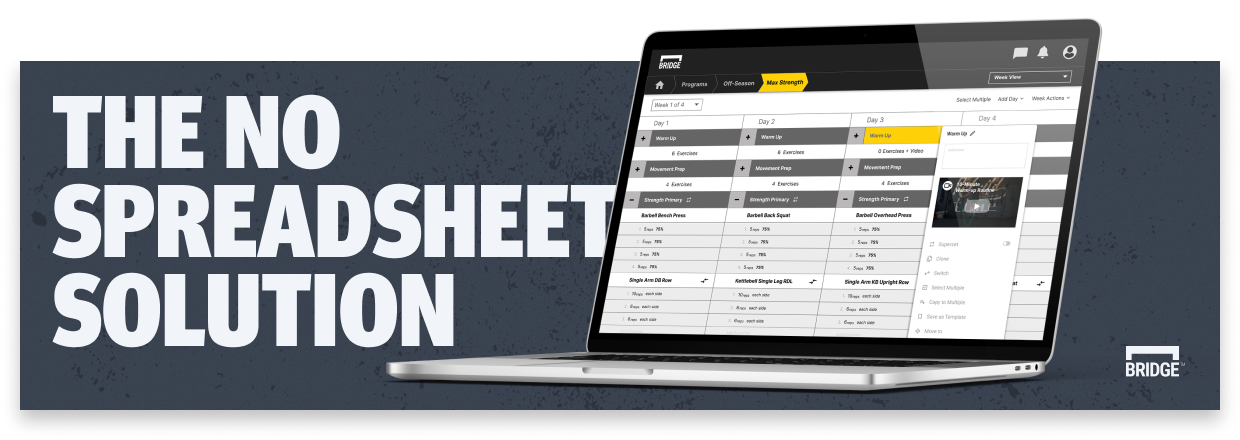
![Blog CTA Med.[button] - PT Business solution](https://blog.bridgeathletic.com/hs-fs/hubfs/Blog%20CTA%20Med.%5Bbutton%5D%20-%20PT%20Business%20solution.png?width=1240&height=570&name=Blog%20CTA%20Med.%5Bbutton%5D%20-%20PT%20Business%20solution.png)